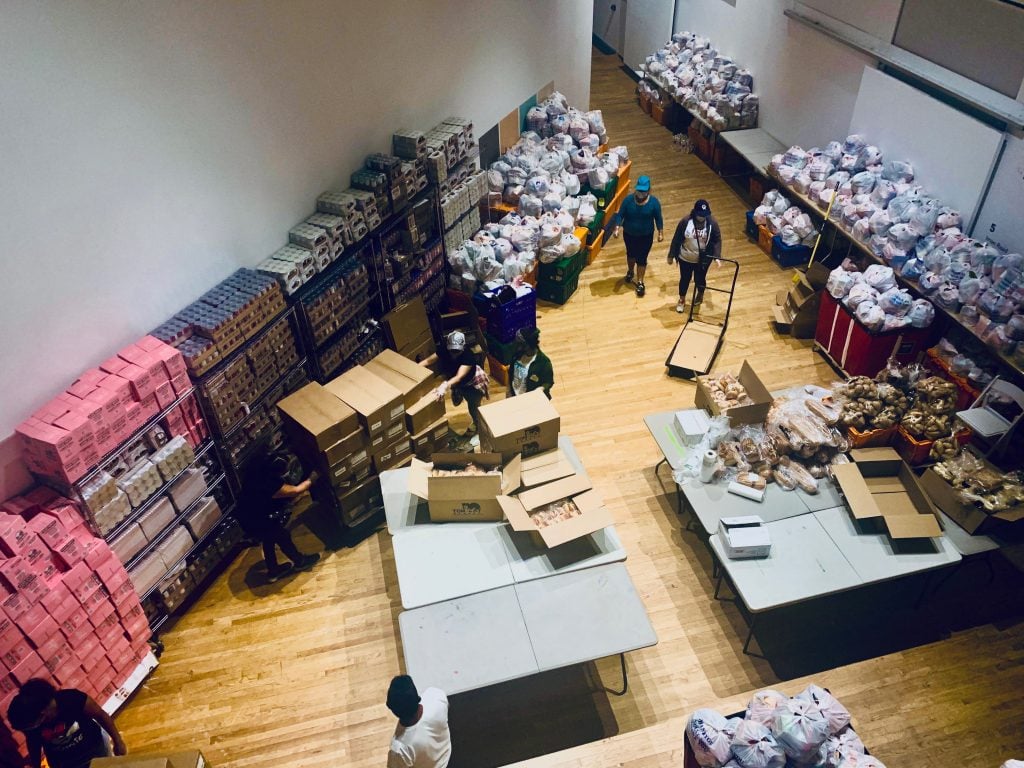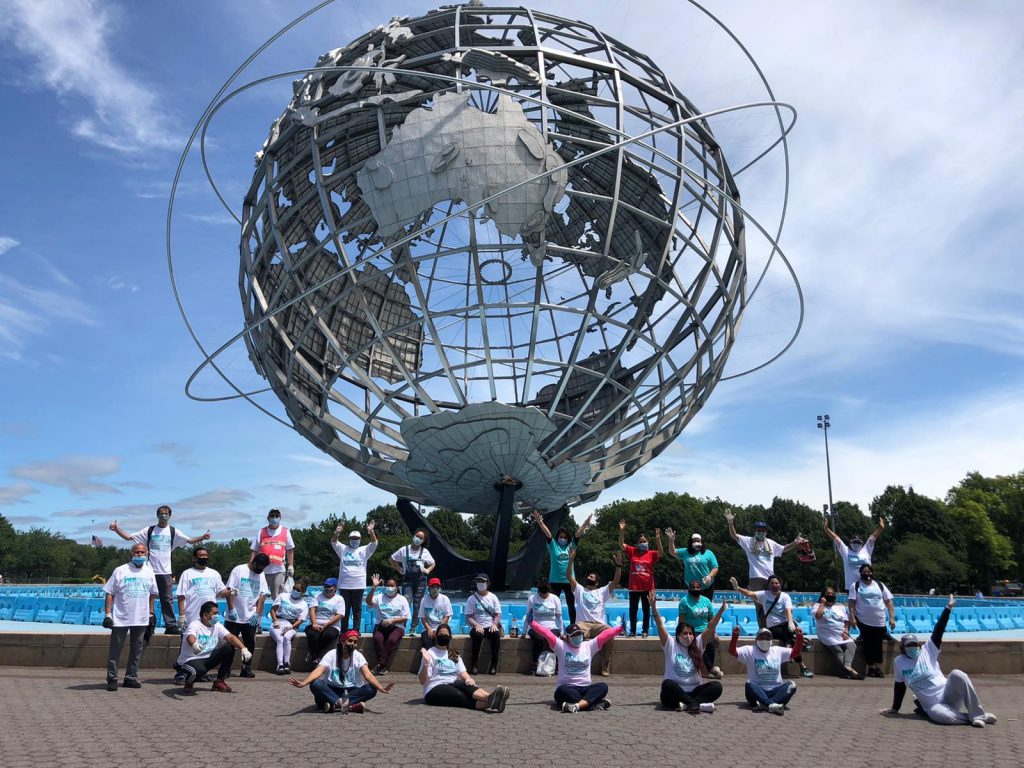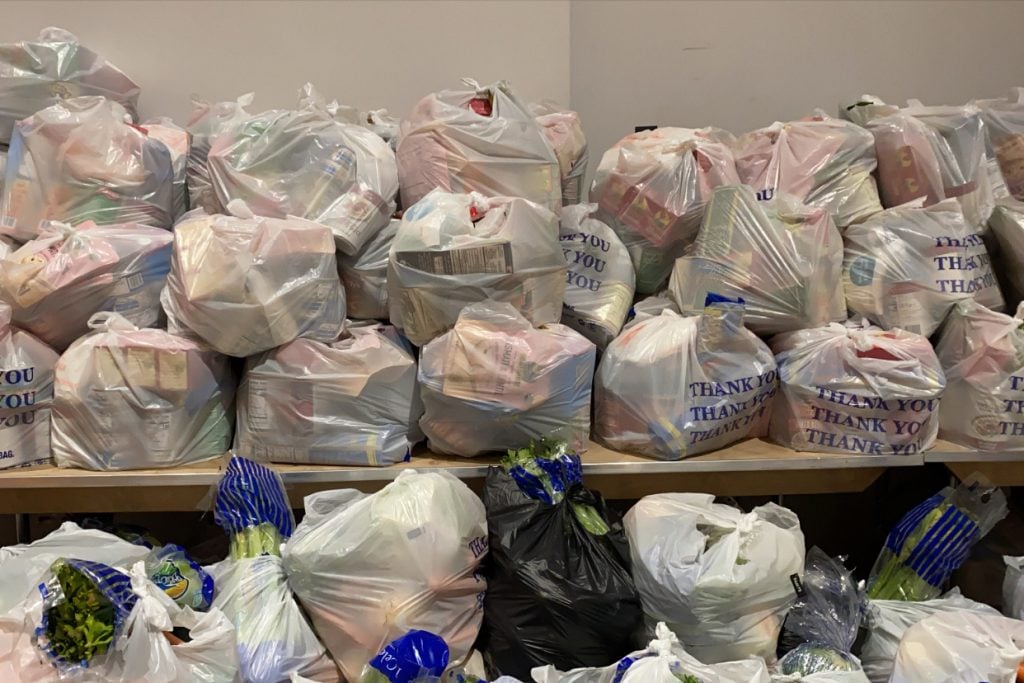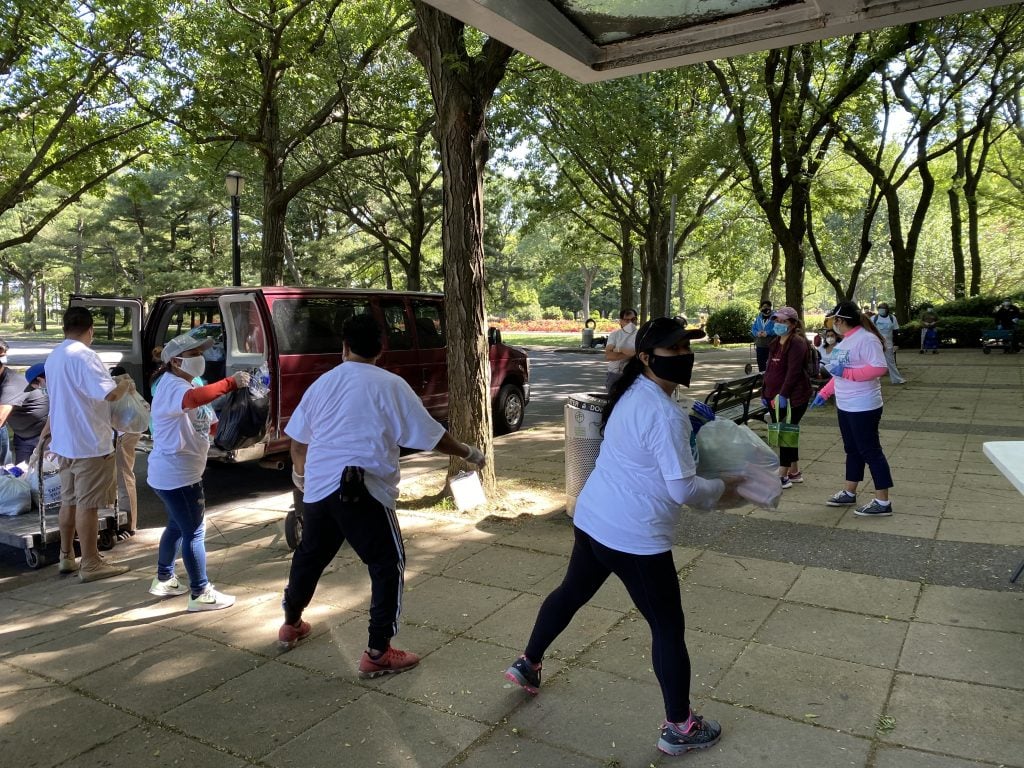Art World
During Lockdown, the Queens Museum Became a Food Pantry. Now, It’s Reopening—and Keeping the Kitchen Intact
The pantry was organized in June in response to overwhelming need in the community.

The pantry was organized in June in response to overwhelming need in the community.

Last week, the Queens Museum reopened to the public for the first time in just over six months. Like other institutions across New York, the museum took a financial hit due to its extended closure, but the effects of the virus were particularly damaging in its home of Corona, Queens, and can still be felt to this day.
That’s why, even as the museum unveils a slate of new exhibitions, it is also operating as a food pantry.
Partnering with La Jornada, a volunteer-led hunger-relief organization from nearby Flushing, and the Together We Can Community Resource Center, a local nonprofit, the Queens Museum is continuing weekly Wednesday food distributions for Corona residents, which began on June 17, for the foreseeable future.
“The food pantry is doing essential work, to provide food for families in our immediate neighborhood as long as we can and as long as it’s needed,” Sally Tallant, the museum’s director, told Artnet News. “And I’m sad to say I think it’s going to be needed longer than any of us would have expected in a first-world country.”

The La Jornada Together We Can Food Pantry at Queens Museum. Photo courtesy of the Queens Museum.
As the epicenter of New York City’s outbreak, the neighborhood of Corona has had 5,156 documented virus cases to date, or one for every 22 people, according to the New York Times. Of those, 447 people have died.
With 63 percent of its residents foreign-born—more than any other zip code in the city—and a substantial number of those undocumented, Corona has a large population that was ineligible for federal relief, such as expanded unemployment benefits and stimulus checks. A quarter of residents lack health care. Many are essential workers whose jobs required them to work on the front lines.
It did not take long for the museum to realize that Corona was bearing the brunt of the burden, and it quickly took action.
“When people started to get sick back in March, we formed a coalition with the Hall of Science, the Queens Theater, Flushing Meadows Corona Park, and a number of community organizations to try and work out what we could do collectively to support our community at that time,” Tallant said.

The La Jornada Together We Can Food Pantry at Queens Museum. Photo courtesy of the Queens Museum.
Thanks to the museum’s community organizer, Gianina Enriquez, the museum already had a relationship with La Jornada, and was ready to respond to growing food insecurity in the neighborhood.
“What’s really evident on Wednesdays when the collection is happening is that there’s an incredible need,” Tallant said.
To date, the Queens Museum has fed 9,650 families in Corona, and hopes to scale up to be able to feed 1,000 families a week. Nor is it the only museum to spring into action as a food pantry: the Brooklyn Museum has also been hosting a food-distribution center.
Tallant also hopes that food-pantry beneficiaries will stick around to visit the museum now that the galleries are open again.
“We’ve made the museum free admission at this time,” Tallant said. “We don’t want to put any financial barriers in the way.”
But she understands if visitors’ return is gradual. “All of us are trying to relearn how to be back in the world with some trepidation,” Tallant acknowledged. “This is a very scary moment globally.”

The La Jornada Together We Can Food Pantry at Queens Museum. Photo courtesy of the Queens Museum.
The institution is offering a quartet of fall exhibitions, including an outdoor installation from New York City Department of Sanitation artist-in-residence Mierle Laderman Ukeles thanking service workers for their tireless work.
With work by 12 artists, another show, titled “After the Plaster Foundation, or, ‘Where can we live?’” looks at housing politics, home ownership, and eviction issues. A show of recently donated photographs, “Bruce Davidson: Outsider on the Inside,” features a series of photos documenting the Civil Rights Movement in New York.
“Bruce Davidson took amazing pictures of New York and it seems really pertinent to look at the city and how it’s changed over time,” Tallant said. “The exhibitions all feel incredibly timely.”